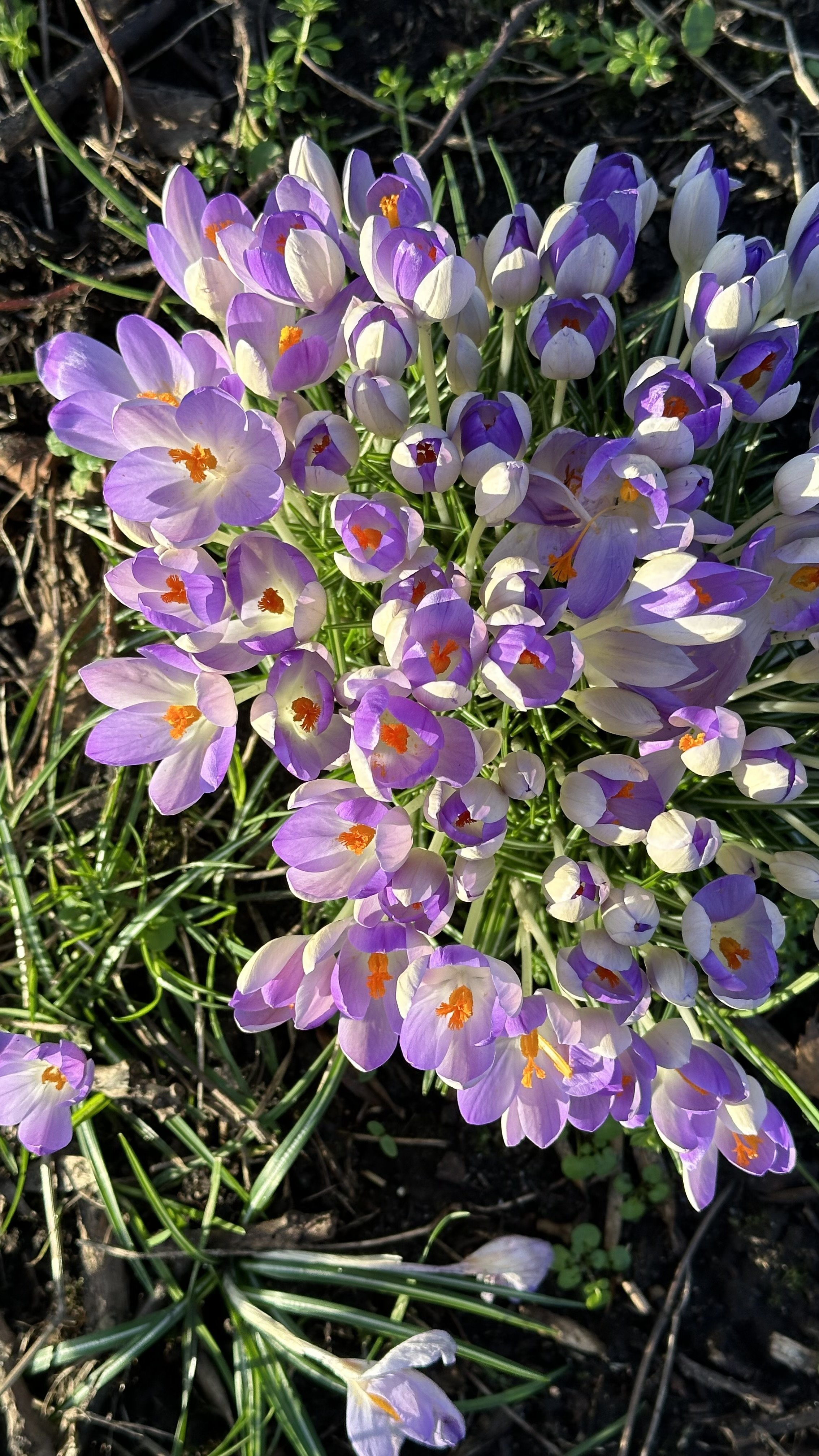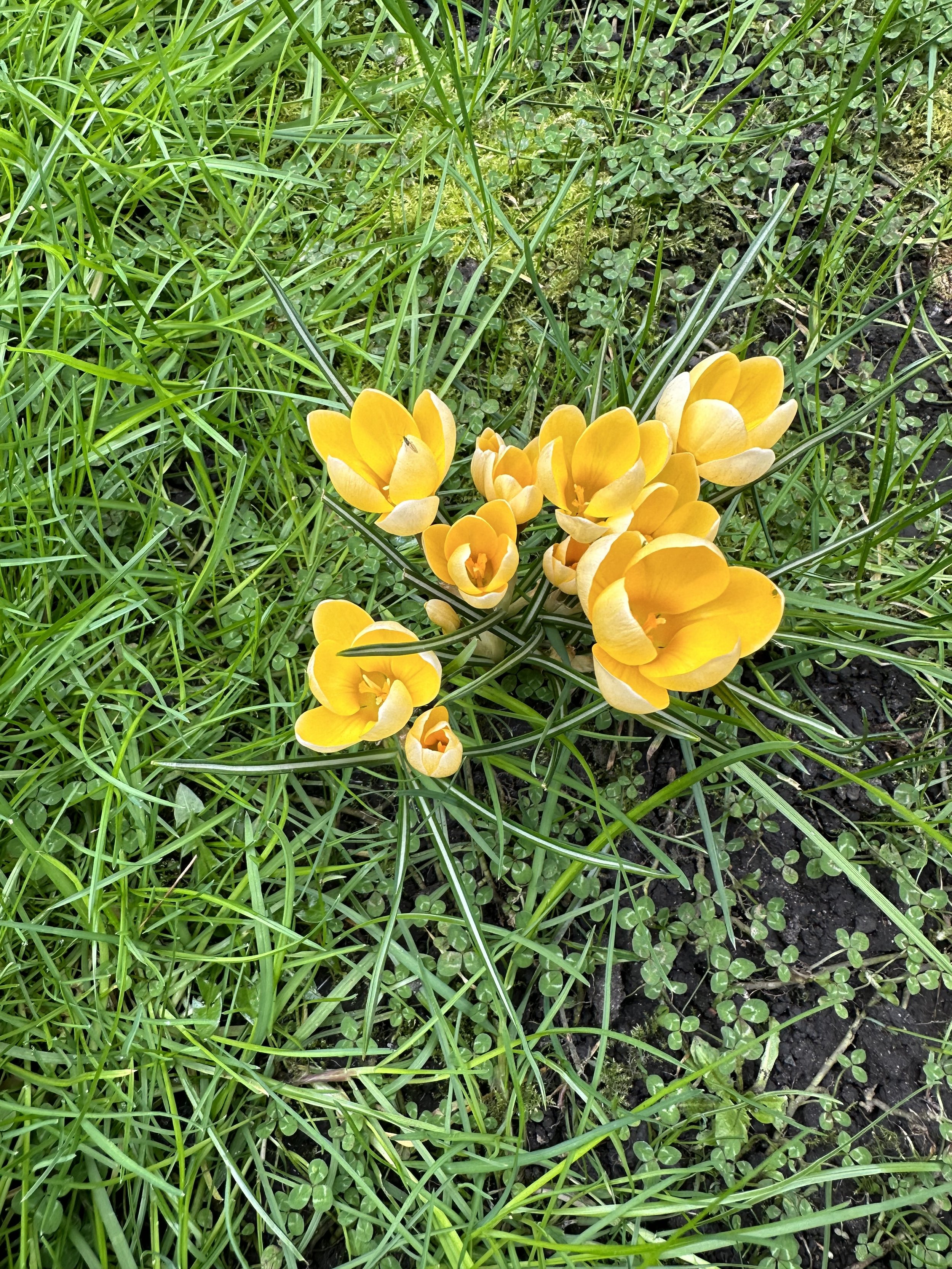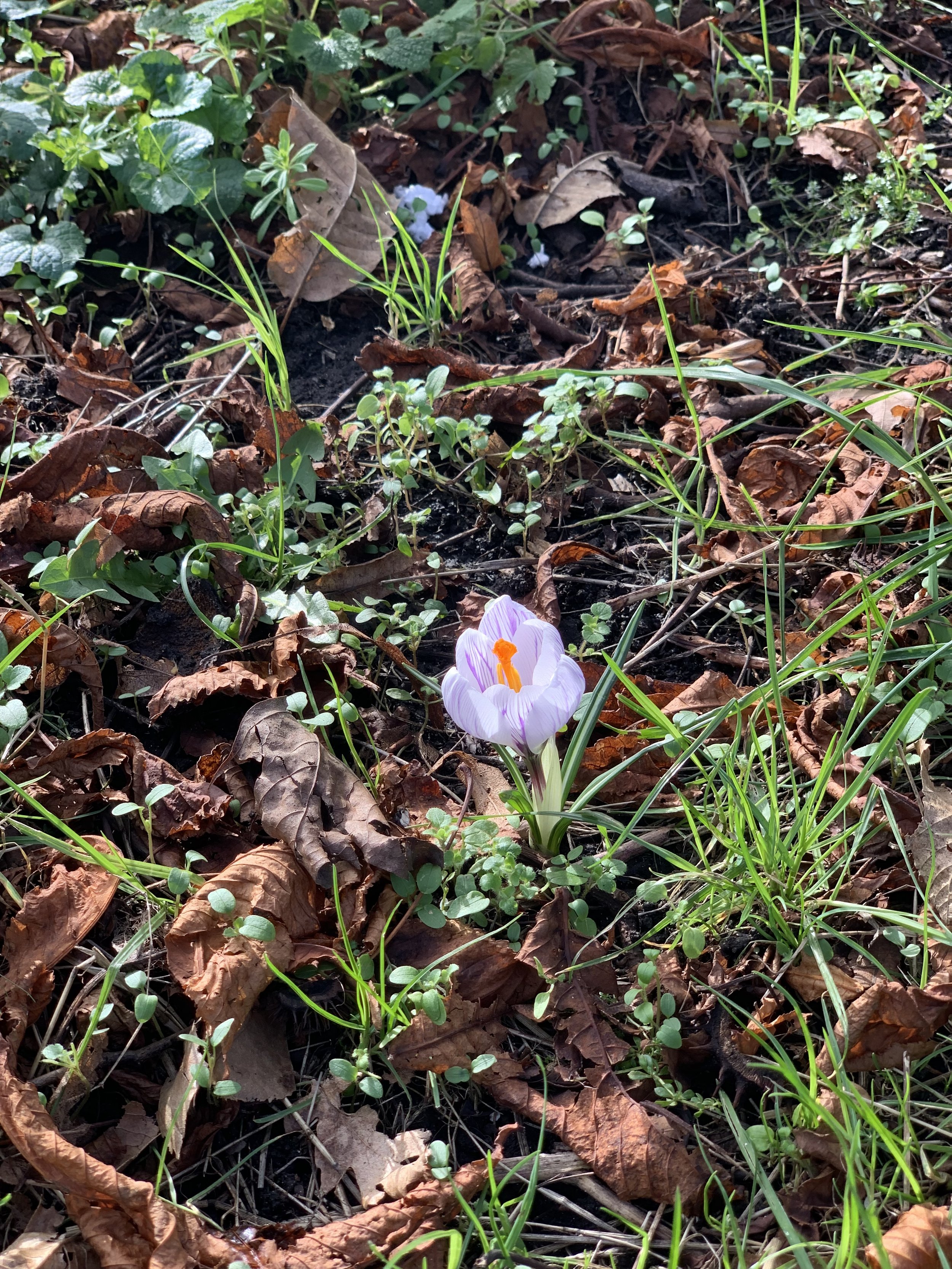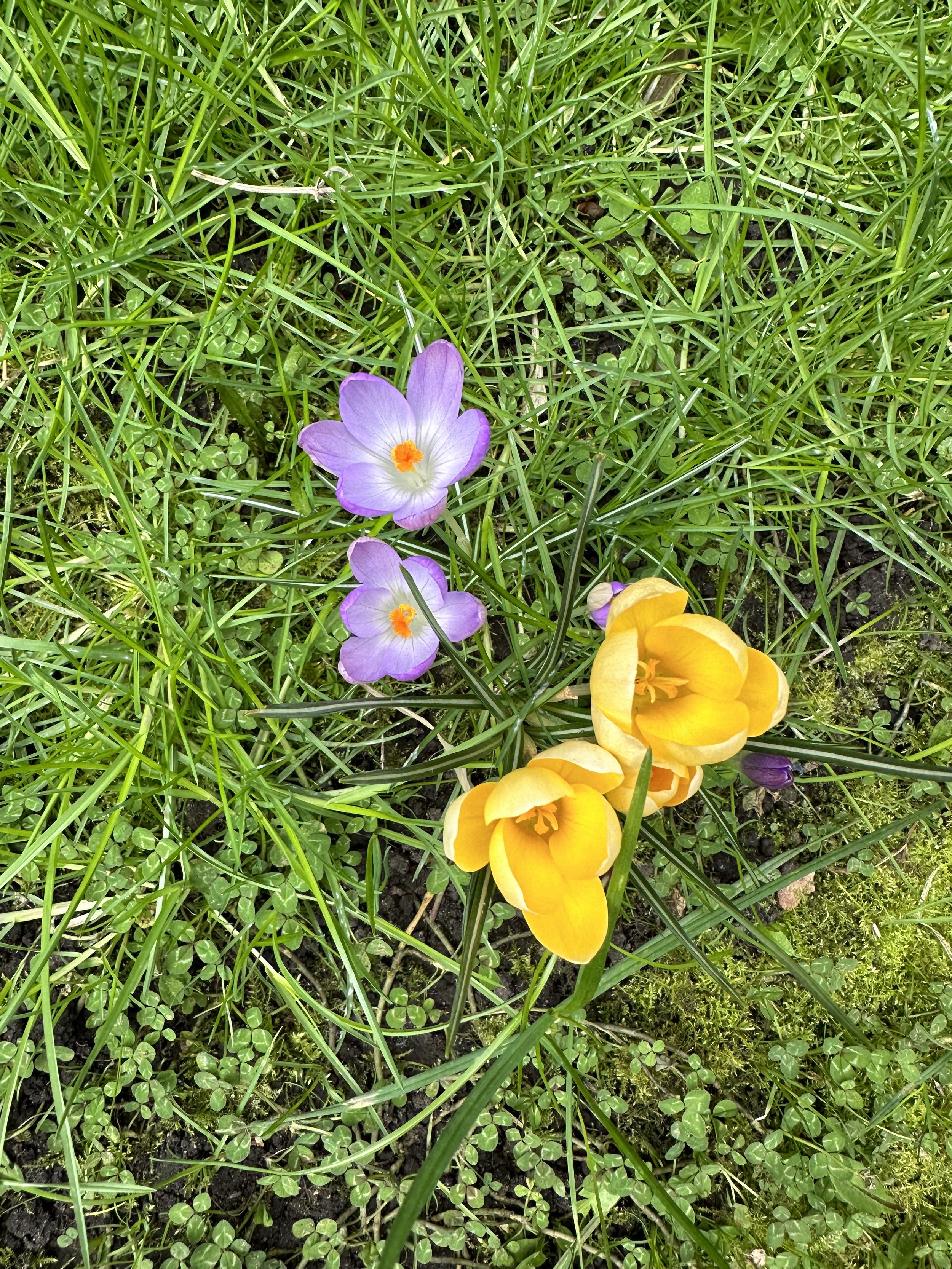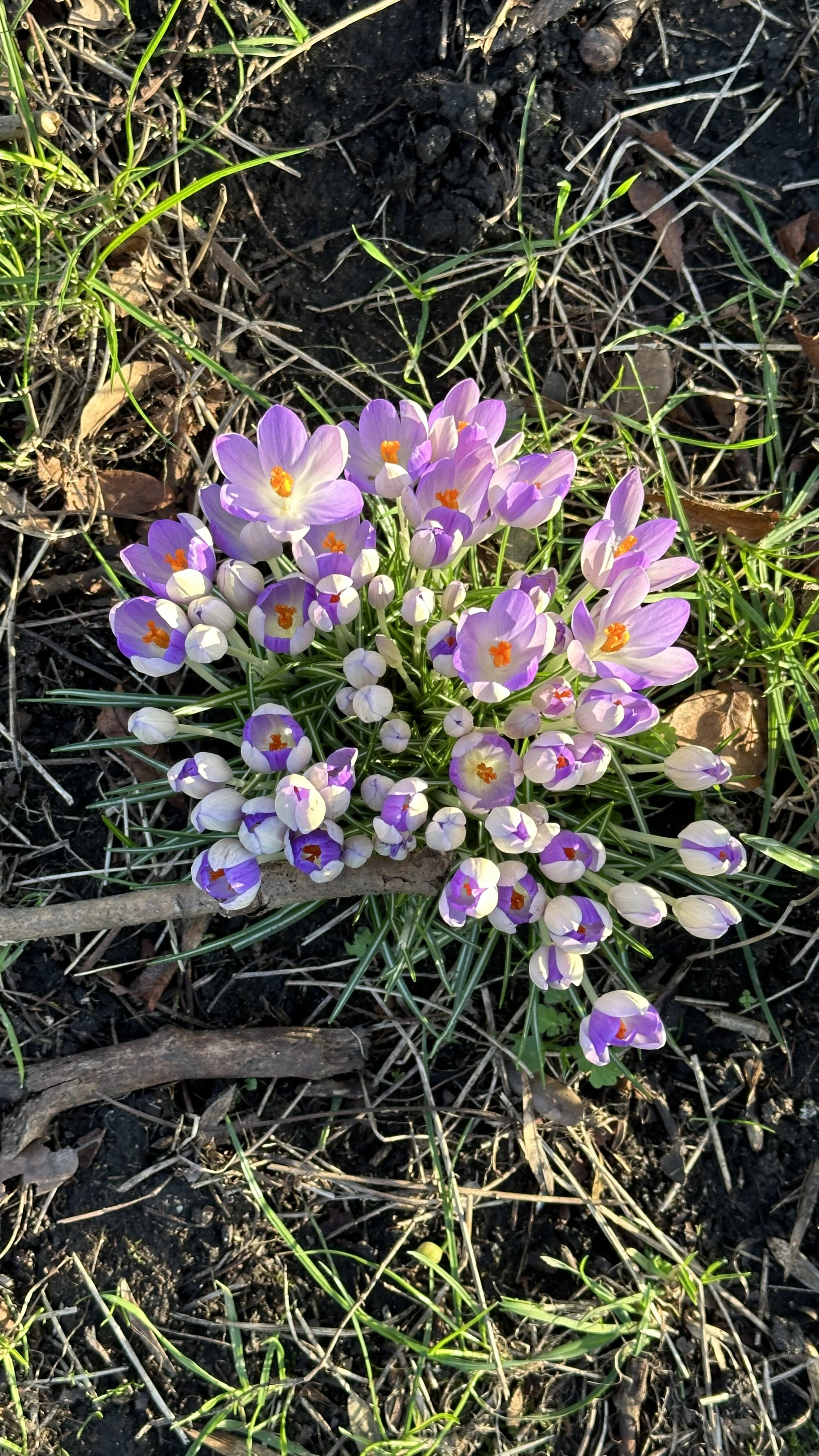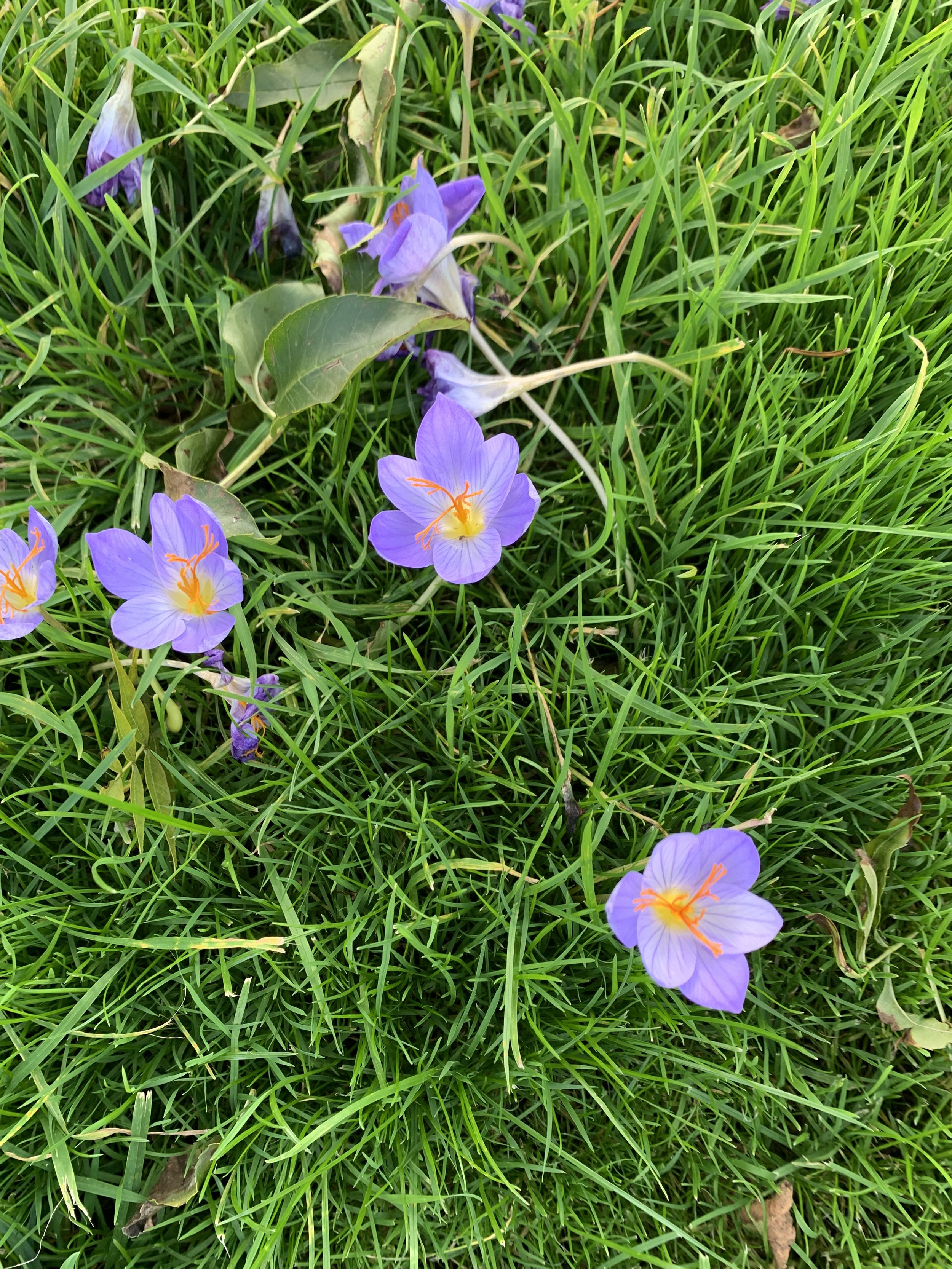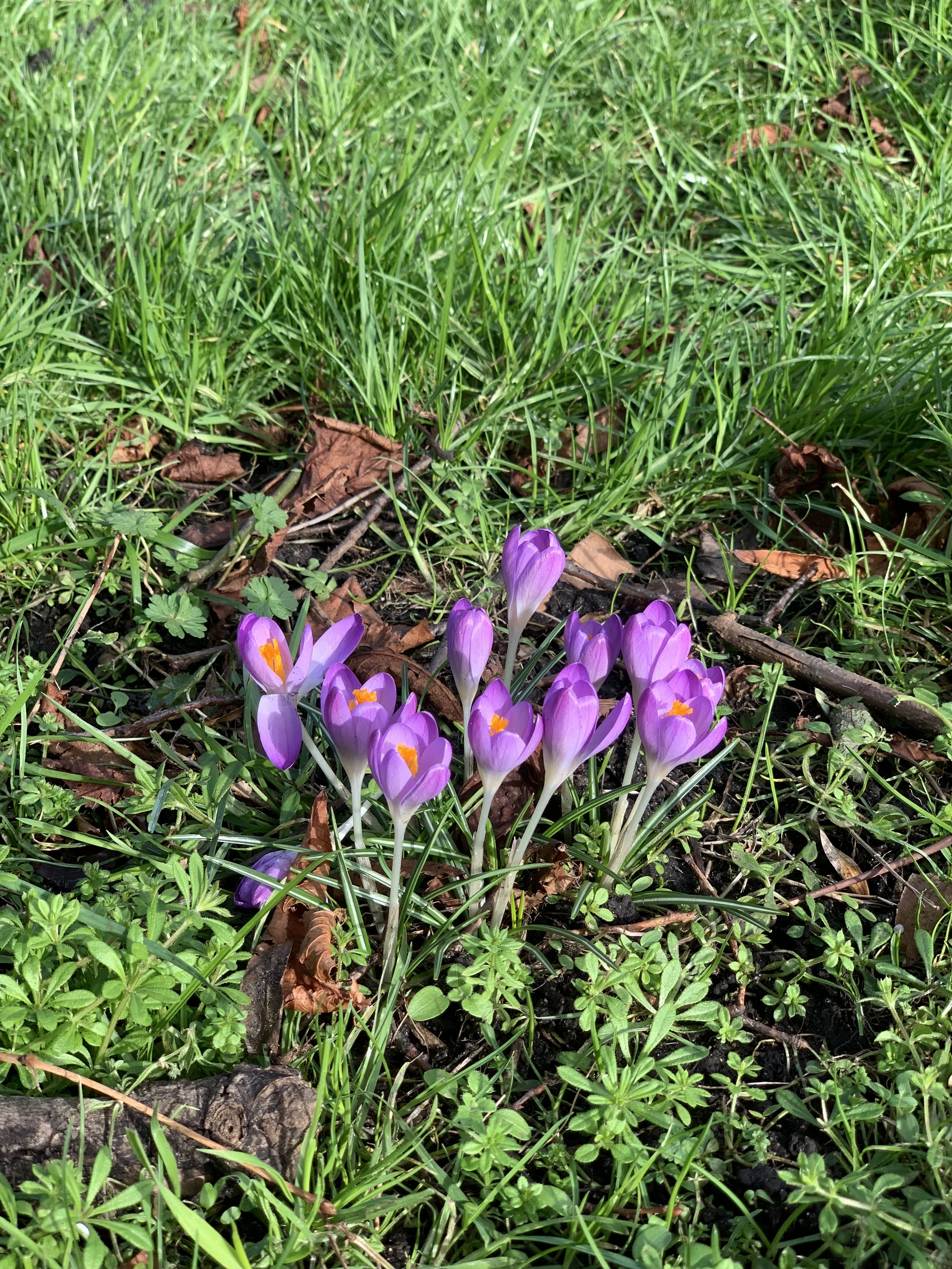When to Plant Crocus
This website is reader-supported - thank you! This post may contain affiliate links. As an Amazon Associate, I earn from qualifying purchases at no extra cost to you.
Crocuses are among the first signs of spring, offering a very welcome burst of color after the long winter months.
After months of gray skies, seeing those pops of purple, yellow, and white is like a breath of fresh air.
With all bulb planting, getting the timing right is key to making sure your crocuses thrive.
Planting crocus bulbs might seem simple, and for the most part, it is—but there are a few things you’ll want to know to ensure that you get the best possible display year after year.
Whether you’re planting a small cluster to brighten up a flower bed or filling your garden with a sea of color, getting the timing, placement, and care right will make all the difference.
So, let’s dive into the details of when to plant crocus bulbs, how to care for them, and what you can expect once they start blooming.
For more bulb planting tips, check out my guides:
One of the best parts of spring, crocus blooming!
Best Time to Plant Crocus Bulbs
When it comes to planting crocus bulbs, timing really is everything.
These bulbs need the colder months to establish their roots before the ground freezes, which is why fall is the best time to plant crocus bulbs.
Ideally, you want to plant them about 6 to 8 weeks before the first hard frost hits your area.
The Farmer’s Almanac site is a great resource to help determine when your estimated last frost date will be for your area.
This gives the bulbs enough time to settle into the soil, making it easier for them to start growing once spring rolls around.
For gardeners in warmer zones, like zone 8, you can get away with planting crocus bulbs a little later.
However, it’s still a good idea to aim for autumn.
If you’re in a zone where the winters aren’t too harsh, your crocuses might even bloom a bit earlier than expected, which is always a nice surprise.
Now, you might be wondering: Can I plant crocus bulbs in the spring?
While it's possible, it’s not the best option.
Spring planting often results in weaker blooms, as the bulbs haven’t had the chance to go through the cold dormancy period they need.
In a pinch, though, if you can’t get them in the ground during fall, planting them in early spring might still give you some lovely flowers—but don’t expect the same show that you’d get from bulbs planted in the fall.
So, if you want your crocus flowers to be as healthy and vibrant as possible, fall is definitely the sweet spot for planting.
And, trust me, when those crocuses pop up in early spring, you’ll be so glad you took the time to plant them at just the right moment!
Looking for a more scientific explanation for why crocus bulbs need the colder winter months before blooming?
The cold period induces biochemical changes within the bulb, like the breakdown of growth inhibitors and the activation of enzymes that promote cell growth and flower development.
Without this cold period the bulbs will not have recieved the necessary environmental cues to transition from dormancy to growth.
For more bulb growing tips, check out my guides:
Container Color: Easy Steps to Growing Bulbs in Pots
Planting Crocus: What You Need to Know
Planting crocus bulbs is honestly one of the easiest things you can do in your garden, but there are a few simple steps that will help ensure you get the best possible results.
First things first: find a spot where your crocuses can bask in the sun.
These little flowers are sun-lovers, so try to pick an area with full sun.
However, if you have a spot that gets a little bit of shade, like under a tree or on the edge of a garden border, crocuses can still do well there too—just make sure the shade isn't too heavy.
Now, let’s talk about soil.
Crocuses are not fans of soggy soil, so you’ll want to make sure your planting area has good drainage.
If the ground tends to stay damp or doesn't drain well, you can improve it by adding some sand or organic matter to the soil.
This helps keep the water moving through the soil rather than pooling around the bulbs.
Crocuses love a well-drained, slightly sandy or loamy soil.
If you’re planting in pots, this is especially important—make sure you’re using a good potting mix that drains well!
Once you've chosen the right spot, it's time to plant those crocus bulbs.
For the best results, plant them about 3 to 4 inches deep.
The general rule of thumb is to make a hole that's about two to three times as deep as the height of the bulb.
So, if you're planting a 1-inch bulb, dig about a 3-inch deep hole.
It's important to plant them with the pointed end facing up.
If you're not sure which side is up, no worries—crocus bulbs are pretty forgiving and will usually figure it out on their own.
Spacing is also important when planting crocus bulbs.
Plant them around 2 to 4 inches apart to give them enough space to grow.
If you're planting a larger group, you can place them closer together for a beautiful, naturalized effect.
Crocuses look absolutely stunning when they’re grouped together, almost like a colorful carpet that brightens up your garden in early spring.
Finally, whether you're planting in the ground or in pots, be sure to give your newly planted crocus bulbs a gentle watering to settle the soil around them.
Just remember, don’t overdo it—crocuses don’t like sitting in wet soil, so a light watering is all they need to get started.
And that’s it!
With just a little care and attention, your crocus bulbs will be ready to surprise you with their beautiful blooms when spring arrives.
For more bulb growing advice, check out my guides:
I planted crocus bulbs in my lawn and learned the hard way that you need to let the foliage die all the way back before cutting back, otherwise they won’t bloom very successfully the next year.
Caring for Crocus After Planting
Once your crocus bulbs are in the ground, the hard part is over, but that doesn’t mean your job is completely done!
Crocuses are pretty low-maintenance, but there are a few simple things you can do to ensure they thrive and come back year after year.
First up, let’s talk about watering.
After you plant your crocus bulbs, give them a good drink of water to help them settle into their new home.
But here’s the key: crocuses don’t like to have “wet feet,” so avoid overwatering.
In fact, crocuses do best when the soil is just lightly moist, not soggy.
If you’ve planted your crocus bulbs in well-draining soil (and you should have, right?), you won’t need to water them much after the initial planting.
As the seasons shift and the weather warms up, the crocus corms will rely mostly on rainfall to get the moisture they need.
I love the striped purple crocuses!
Next, don’t worry too much about fertilizing your crocus plants.
They’re pretty happy with the nutrients they get from the soil and the surrounding environment.
If you feel the need to give them a little extra boost, a light application of a balanced, slow-release fertilizer in the fall (before they bloom) is all they really need.
But honestly, crocuses are pretty self-sufficient when it comes to food, so it’s not something you’ll need to stress over.
Now, let’s talk about what to expect as spring rolls around.
Once your crocuses start to bloom, you’ll see those lovely flowers open up and brighten up your garden.
They typically bloom early in the spring, often pushing their way through the last remnants of snow.
It’s such a magical sight, and trust me, it’ll never get old.
The blooms will last for a few weeks, depending on the weather, and once they’re done flowering, don’t be in a rush to cut them back.
Here’s an important tip: let the foliage die back naturally after the flowers have faded.
The leaves will continue to photosynthesize and gather energy to store in the bulb for next year’s growth.
If you trim them too early, you might be cutting off the energy they need to come back strong next spring.
So, resist the urge to tidy things up too soon!
Once the leaves have turned yellow and withered, you can safely remove them.
One of the best parts about planting crocus is that, once established, they’ll come back year after year, sometimes multiplying and forming little clusters.
Over time, you’ll have a lovely patch of crocuses.
And finally, don’t forget to check on them occasionally.
While crocuses don’t need a lot of attention, it’s always nice to give them a little love now and then—maybe clearing away any debris that might block the sun, or checking that they’re not buried too deep in leaves.
Other than that, sit back and enjoy watching your crocus flowers brighten up the garden every spring!
Do Crocuses Bloom Every Year?
One of the best parts about planting crocuses is that once they’re established, they’ll bloom year after year, and often in greater numbers as time goes on.
So yes, crocuses do bloom every year, and once you've planted them, you can pretty much expect a beautiful show each spring without much extra effort on your part.
When you plant your crocus bulbs, they begin to settle in and develop strong roots, allowing them to bounce back year after year.
As the bulbs mature, they often multiply, creating little clusters of crocus flowers that come up like clockwork each spring.
This process can take a few seasons, so don’t worry if you don’t see a huge patch of crocuses the first year—be patient, and you’ll be rewarded as they naturalize and spread out in your garden.
The flowers might only last a few weeks, but they are totally worth it.
And if you're wondering if you’ll have to replant crocus bulbs every year, the good news is no!
Once they're in the ground and properly cared for, they’ll continue to bloom, often multiplying and spreading across the garden.
Top tip:
All you need to do is let the foliage die back naturally after blooming, and your crocuses will store up energy to bloom again the following year.
So, in a nutshell, yes—crocuses bloom every year, and once they’ve settled into your garden, they’ll continue to brighten up your springtime for years to come.
It’s a lovely, low-maintenance reward for a little bit of effort.
Check out my guides for more advice:
FAQS
When do crocus flowers bloom?
Crocus flowers usually bloom in early spring, often as one of the first flowers to show up after winter.
When is the best time to plant crocus bulbs in the UK?
The best time to plant crocus bulbs in the UK is in the autumn, usually between September and November.
Can I plant saffron crocus in my garden?
Yes, saffron crocus (Crocus sativus) can be planted in the same way as other crocus bulbs. It prefers full sun and well-drained soil.
How far apart should I plant crocus bulbs?
Plant crocus bulbs about 2 to 4 inches apart to allow them enough space to grow and multiply.
For more tips on taking care of bulbs, check out my guides:
Wrap-Up
Planting crocuses is so easy, especially when you get to enjoy their spring flowering display year after year.
Whether you’re planting bulbs crocus in full sun or in partial shade, these resilient little flowers can thrive with just a little care and the right conditions.
Just make sure you’re planting in well-draining soil, as crocuses aren’t fans of soggy conditions.
If you’ve decided to plant crocuses, you’ll also want to consider the different varieties.
For example, crocus sativus is known for its beautiful purple flowers and is the variety used to harvest saffron.
On the other hand, the autumn crocus, which blooms in the fall, offers a unique touch to your garden and extends the beauty of crocus blooms well beyond spring.
Once you’ve planted your bulbs, just give them time to establish their roots, and you’ll be rewarded with vibrant blooms that signal the start of spring.
So go ahead—get your crocus bulbs in the ground, and watch as they begin to bloom with beauty each spring.
Pin this post to save it for later!


